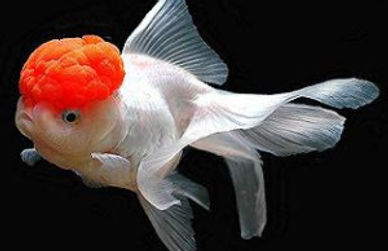

How to take care of Gold Fish
I remember when I was a kid, I use to stand outside at the Aquarium Shop and stare at the Goldfish kept in the fish shop. This one fish that has intrigued me from a very young age is the Goldfish. Always wondered how to take care of Goldfish? I am sure the first fish anyone keeps is the goldfish. There are many types of Fancy Goldfish nowadays They include comets, shubunkins, fantails, orandas, ryukins, moors, telescope eyes, celestial eyes, bubble eyes, butterfly tails, pearlscales, wakins, lion heads, ranchus, and many more. Fancy Gold Fish can command a very high price in the hobby.
Care Sheet for a Goldfish
Safe Housing for your Goldfish
Goldfish should never be kept in bowls or small aquariums as they tend to grow big or in any fish tank that is not having proper filtration. Oxygen in the water is very important as the gold Fish generate lots of waste which can be harmful if it is allowed to accumulate. Fancy goldfish should have at least 10 gallons per adult fish. Additional aeration is required during the warmer temperature. One most important thing is to avoid decorations with sharp edges and any abrasive rocks which can tear fins as well as eye sacs. So avoid substrate with jagged gravel. Avoid strong currents in the water.
Water Parameter for your Goldfish
Goldfish is a cold-water fish, it does not mean you have to pour cold water from the fridge. Goldfish can be kept in an aquarium between 68 degrees Fahrenheit to 74degree Fahrenheit. It's better to research the optimum temperature for your type of Gold Fish, for example, Shubunkins should be kept between 60 degrees Fahrenheit to 70 degrees Fahrenheit. The ideal pH level gets out of hand as it can be between 7.0 to 8.4. Don't let the temperature go out of hand as it can be harmful to your Goldfish. Maintain good filtration at least 30% weekly and siphon the substrate at least once a month. I strongly recommend Seachem Prime as your water conditioner for the Aquarium. Keeping the aquarium clean will help your fish grow healthy.
Goldfish Food
Being Omnivores Goldfish feed on insects, crustaceans, and plant matter in the wild. In the Aquarium Goldfish should be given a combination of good quality Flakes, Pellets, and Frozen and Live foods. omnivores, feeding largely on crustaceans, insects, and plant combinations of matter in the wild. Goldfish are naturally bottom feeders and may gulp air when feeding at the surface, causing them to lose equilibrium and float upside down. To avoid this, soak flake foods briefly before feeding and avoid the use of floating pellets. For best results, rotate your fish’s food daily and feed only what they can consume in 2 to 3 minutes, once or twice a day.
GoldFish Compatibility/Behavior
Goldfish are the most peaceful habitats and should be avoided keeping with boisterous fish. They should be kept with fish that are tolerant of cooler water temperatures. Goldfish should be avoided with cichlids, Beta
etc. Goldfish of different sizes can be kept together. Shubunkins may become aggressive with smaller fancy goldfish. They are intelligent and can be taught to feed by hand too. It is said they recognize the owners and if properly looked after can live up to 20 years. Never buy fish that are non-compatible with the goldfish as they can be stressed out easily. Ask your local fish shop to guide you as you should not be sorry for bringing a monster into your tank to be with your beloved Goldfish.
Common Disease in Goldfish
Swim Bladder Disease:- This is the most common fish disease. This happens mostly due to the floating food that is given to the Goldfish. Along with the floating fish food the goldfish gulps the air too, owing to this, in the long run, the goldfish is left imbalanced. Avoid Floating pellets. If you give them flakes, kindly soak them before feeding the Gold Fish. Goldfish are the bottom feeder fish.
Treatment for Swim Bladder Disease:- You can use Seachem Kanaplex for treatment. It is advisable not to feed for 2-3 days of treatment. Also, try and feed crushed green peas after the medication process. Make sure the water is well-oxygenated.
Let's understand the disease and its treatment using Seachem products.

Cold water Fish. Beautiful Fancy Gold Fish.Their bodies are thicker and nice round shape belly than other Shubunkins

Cold water Fish. Shubunkin should not be kept with a smaller fancy gold fish. These fish are also very hardy, and are known to be extremely adaptable and able to survive in most situations with a wide variety of food

Oranda Gold Fish ..The most attractive fish in the Goldfish Aquarium. You cannot miss this one because of a nice red cap on its forehead.Very Peaceful and loving Fish.

Cold water Fish. Beautiful Fancy Gold Fish.Their bodies are thicker and nice round shape belly than other Shubunkins

